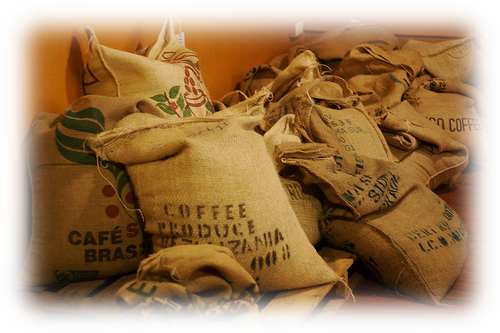Telling Children’s Stories Using Story Sacks
In this article about story sacks (also known as “storysacks” without a space), we’ll look at what they are, why they help us tell stories, what is in one and how you can make your own!
I don’t think anyone viewing this website will disagree that one of the most important gifts children receive is a love of stories and reading.
Young children often find it easier to relate to stories and concepts if they have something concrete in front of them that help them understand what’s being discussed or told. This is one reason picture books and books with plenty of simple illustration are so popular for this age group.

What are story sacks?
Story sacks are a genuinely fantastic and different way of engaging children in the stories and books you’re sharing with them.
The point of a story sack is to help you illustrate the story in more ways than just the pictures on the page.
If you’ve read all the content on my free storytelling course or article on using sound effects in storytelling then you’ll already be familiar with some other key ways to engage your kids in the stories and how to illustrate the story in more ways than what may initially be obvious on the page. Story sacks
The sacks might contain soft toys, plastic figures or other objects important to the content of the story or material the children’s book is presenting.
Really, the sack provides a convenient way to store the associated objects, helpful in any setting, whether it’s for storing at home or in an institutional setting.
The sacks themselves often illustrate the theme of the book, making it easy for children who can’t read, find and play with objects from their favourite stories.
Why do story sacks help us tell a story?
Because the story sacks bring a more concrete dimension to the material being presented, readers can use the story and the props the sack contains to take the discussion beyond simply just telling the story.
Whether it’s in a group setting or on a one-to-one basis, the objects make it easier to involve the child in the story’s content.
The story sacks provide a tool to take the discussion of the content to the next level, involving the thought and creative process natural to children to another level.
Our children naturally act out what happens in their lives, especially if they have something concrete in-hand to help them.
Ask your child to use the props to make her own changes to the story using the props.
It doesn’t matter if the changes are consistent or even realistic.
The act of anticipation and imagination provide good mental exercise for your child, who learns that she can exercise problem-solving thinking and discover different outcomes to familiar situations (and isn’t this one of the main reasons for play and stories for kids – to allow them to explore the world without the danger of the “real” world).

Story sacks are also an excellent way to simply entertain children on long trips, whether on an airplane or in a car.
Surprising your kids with a new story or two while on a long trip cuts their boredom and restlessness and the number of materials, activities and related props will give them huge numbers of combinations of things to do while leaving you free to concentrate on the road ahead.
Unfortunately, any parent will be familiar with the fact that while adults find reading the same material over and over tiring, young children enjoy it.
Besides enjoying being read to, the props provide some novelty, helping pass the time quickly.
Some story sacks come with CDs, which can be uploaded to MP3 players, reducing the need for someone to read the story repeatedly.
Learning to organise and pick up after themselves is another challenge that children need to learn (and this entertaining story written by a dad will attest to that).
Story sacks can be good tools to teach kids the rewards of these processes. After playtime with the story sack is over, demonstrate the value of organisation by putting away the contents.
The next time the child wants to enjoy the story or the props, all the pieces will be in one place and he won’t have to hunt to find his favourite objects from the story sack.
It goes without saying that that is easier said than done and cleaning a messy room may be overwhelming for a child, but when you ask him to put just a few objects away in one familiar package, the task becomes achievable with immediate rewards.
Where can I buy storysacks?
Storysacks are relatively new to the world of storytelling and they’re not everyone’s cup of tea. They are also expensive but do contain a lot of material.
Finding the story sacks is easy online, or if you’re handy with arts and crafts, you can make your own story sacks using prefabricated bags or constructing your own (see below).
How to create your own storysack
If you decide to make your own story sack, plan to spend a little time hunting for the supporting material, which might be challenging for obscure or less popular books (or even the sack itself).
Consider enlisting the help of friends and family to help make the story sacks by asking them to keep their eyes out for the things that work as props.
List the objects that illustrate the story, the size and the budget.
- Think about the message and any educational points within the story. Is it about a new baby in the family? consider including copies of the 20 week scans or a (kids) stethoscope etc.
- Where is it set? If it’s on a farm, consider adding a tractor toy or some corn ears.
- Is there friendship in the story, are there any games or puzzles that you could use to compliment the theme?
- Are there animal characters? Maybe include a stuffed toy animal to be the character
- If you have voice recorder (and most smartphones will have one), why not record yourself or a family member reading the story and include that in your virtual sack.
Like all toys, children eventually outgrow them, so don’t overdo it and maybe consider donating the storysack once the attachment is gone (although that will probably depend on just how much chocolate is smeared over it…)
Technically you don’t need a “sack” and in fact any container will do (obvious I know but it’s easy to get hung up on the name: storysack)
If there’s one thing you take away from this article about storysacks, it’s that there can be more to reading children’s stories and books with your kids.
You don’t have to go rushing off to Amazon to buy a storysack, or even spend hours making your own, but maybe have a think about using one or two props to help you with a bedtime story that you’ve long since grown bored of but your kids still love and force you to read.


What a great, 3-dimensional, experiential idea!
Isn’t it just! As a hypnotist, I’m always trying to involve more senses than just the one, and storysacks turn a story into a full blown multi-sense adventure!